The 7th
LaureatesSculpture
Christo & Jeanne-Claude
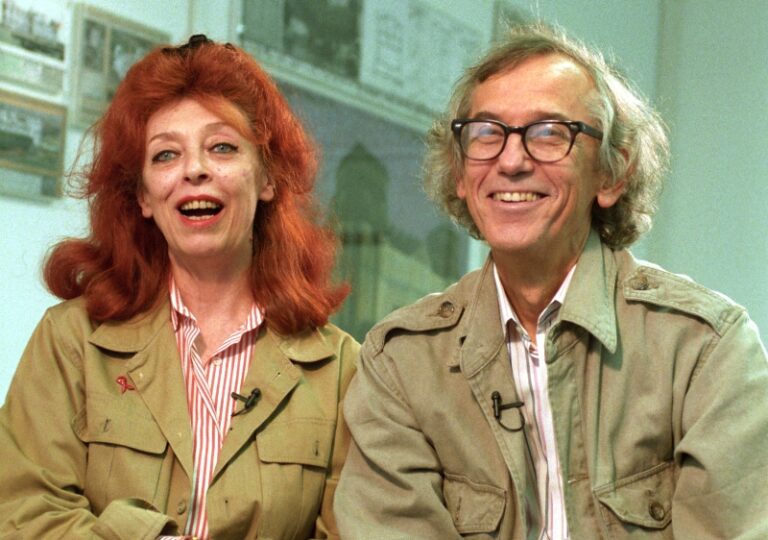
Christo and Jeanne-Claude have an extraordinary ability to capture the popular imagination with their vast,exuberant wrappings of iconic buildings and objects. The Wrapped Reichstag in Berlin in 1995 was the culmination of 25 years of fundraising (entirely from the sale of their own preparatory drawings and collages),political lobbying and planning – an amazing achievement. Their career began with wrapping relatively small objects,but soon they had developed into artists who made public statements on a grand scale. From drawing a curtain across a valley to surrounding a group of islands with pink fabric; from wrapping trees in a park to wrapping the Pont Neuf,Christo and Jeanne-Claude have created intensely memorable experiences in the context of daily life for many millions of people.
Biography
Wrapped Reichstag,1971–95,like few other contemporary artworks,has captured the imagination on a global scale – a point made even more remarkable by the fact that it took almost 25 years to create but existed for only two weeks. Over the years,Christo and Jeanne-Claude have revolutionised the postwar conception of sculpture with a series of works notable not only for their visual impact,but also for the degree to which they are symbolic of the complex social and economic forces that have played a role in their creation. Wrapped Reichstag was not just a wrapped building; the Christos ‘wrapped’ (and so paradoxically emphasised) the power and energy embodied in the history that shrouds this building of profound symbolic importance,especially in the light of the collapse of communism and the subsequent reunification of Germany in 1990.
Although their career began with the packaging of relatively small objects,which could be treated as traditional artworks,the main emphasis in their work has been on the creation of major public environmental works,the first of which was Dockside Packages,created in conjunction with Christo’s first solo exhibition,at the Haro Lauhus Gallery in Cologne in 1961. One basic premise of their public work is the importance of preserving their complete artistic independence,and to this end they do not accept any form of sponsorship. The money needed for their ambitious enterprises comes entirely from their own pockets and is raised through the sale of preliminary drawings,collages and maquettes. It was estimated in 1995 that they had,at that stage,paid $60 million from their own pockets.
Jeanne-Claude has described the work Christo made immediately after his escape to the West as ‘a scream of freedom’ (he left his native Bulgaria for Czechoslovakia in 1956,then moved to Austria in 1957 and arrived in Paris in 1958 before settling in New York in 1964). The influences on their work have been drawn from both the communist and capitalist spheres. In his youth,for example,Christo came into contact,through his parents,with the ideas of Soviet revolutionary avant-gardism,and became aware of the great agitprop celebrations staged in the years immediately after 1918 by the Russian constructivists. Later,during his period at the Sofia Academy,he was made to work on landscape schemes meant to give western passengers travelling through Bulgaria on the Orient Express a favourable impression of the Bulgarian countryside.
The Wrapped Reichstag,though certainly one of the most important of their collaborations,is only one in a major series of public wrappings,some of which are much larger than the Reichstag in purely physical terms. Their first wrapped public building was the Kunsthalle,Bern,in 1968. Since then some of their more memorable projects – such as their Wrapped Coastline,1969,at Little Bay,Sydney,Australia; their Valley Curtain,1972,at Rifle,Colorado; and the the 24.5 mile long Running Fence,1976,in Sonoma and Marin Counties,California – have all involved not buildings but vast areas of landscape. For Wrapped Coastline they used one million square feet of fabric and 36 miles of rope. In 1983 they created one of their most poetic projects,Surrounded Islands,in Biscayne Bay,Greater Miami; and in 1985 one of their most historically resonant,when they wrapped the Pont Neuf in Paris,one of the key elements in the Parisian cityscape. In 1991 it was the turn of their Umbrellas project on either side of the Pacific – in Ibaraki,Japan,and in California – once again a fresh departure in terms of imagery and method.
The technique of wrapping is significant not only because wrapping conceals in order to reveal,but also because it simplifies the forms involved and reduces them to their poetic essence. Furthermore,this wrapping of objects links their work both to pop art,through its insistence on the ordinary or the everyday,and to minimalism,through its equal insistence on simplification. For example,the series of ‘Storefronts’,made soon after the Christos settled in New York,were first perceived as pop objects,and then as harbingers of minimalism. Despite such references the Christos are essentially populists,convinced that art occupies a vital place in people’s lives,and that its influence should be felt well outside the sterile setting of the museum. They aim to offer people intense and memorable experiences in the context of daily life,and they feel that the temporary nature of what they do actually intensifies the public response. They have invented,not simply new ways of making sculpture,but a visionary new way of creating art with wide implications for the future.
Edward Lucie-Smith
Jeanne-Claude: She passed away on November 18,2009, New York
Chronology
Jeanne-Claude: Born Jeanne-Claude de Guillebon,June 13,Casablanca,Morocco
Surrounded Islands,Biscayne Bay,Greater Miami,Florida,1980-83
-
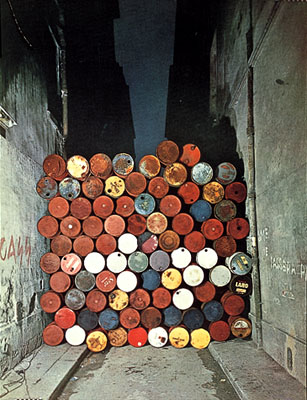
Wall of Oil Barrels - Iron Curtain
-
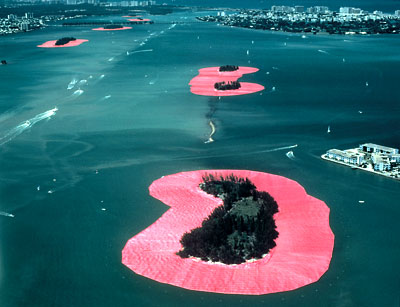
Surrounded Islands, Biscayne Bay
-
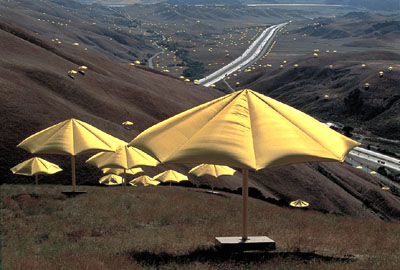
The Umbrellas, California
-
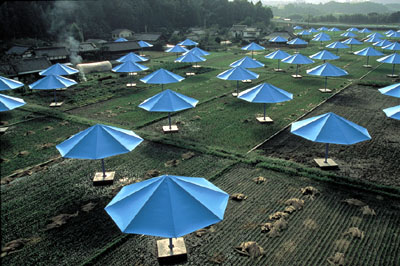
The Umbrellas, Ibaraki
-
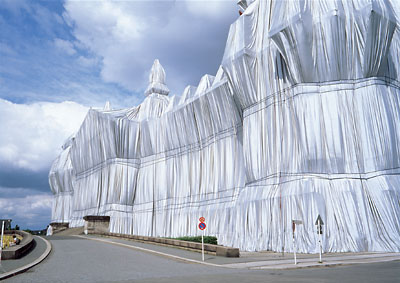
Wrapped Reichstag, Berlin
-
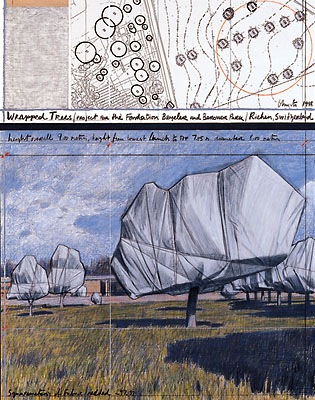
Wrapped Trees
-
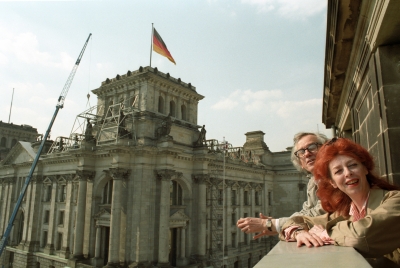
Christo & Jeanne-Claude

